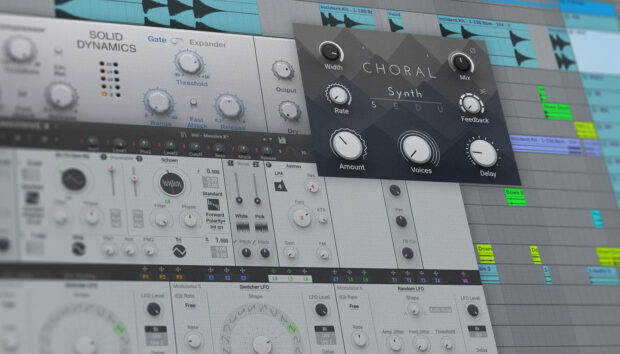
Native Sketches is the result of a simple challenge, posed to 25 producers and beat-making talents from around the world: Create a new musical idea using Native Instruments software and hardware. In this video, Native Instruments gets an exclusive look at how TĀLĀ begins working on a new idea, direct from her studio.
London-based producer TĀLĀ creates Middle Eastern-tinged electronic music that touches on UK garage, breakbeat, R&B and hip hop. Her contribution to season two of Native Sketches combines upbeat chords from KINETIC METAL, stuttering beats from DRUMLAB, and floor-shaking bass from REAKTOR PRISM to great effect – listen here.
Watch the video below to find out how TĀLĀ put her sketch together, then read on to find out how she develops ideas, stays inspired, and finishes tracks.
What did you want to achieve with your sketch?
For me, sketching is the starting point – it’s how I form my ideas, before building upon them to create a track. This sketch in particular was made late one night when I had a lot of friends in the studio. Everyone was having a fun Friday night – we had some drinks, everyone was smoking, people coming in and out – and I just wanted to vibe out without distracting from that. I wanted to create something that reflected the mood of that night.
How do you go from a sketch to a finished track?
It depends how inspired I am. Sometimes I just have a vision and work in the moment; layering the vocal, putting this and that down, and I’ll have almost all the bones of a track very quickly. From there I can easily come back to it and finish it. Sometimes though, I might have an idea or a loop that I leave for months before I really have a vision for it.
I’d say I seven out of ten of my ideas get turned into full tracks one way or another. I usually go with my initial gut feeling on whether or not I should finish a track, or if there’s something there worth developing. But sometimes there might be a track that I completely sleep on, and come back to it in a year like, “This is crazy; I need to look into this. I need to get back into this now.”
How do you keep ideas flowing in the studio?
I actually have a few techniques for getting over creative blocks. Sometimes when I’m finishing a track and I’m stuck, and I’ve listened to it 1000 times, I’ll put on a random music video. It could be a really funny ‘80s track or something like that. When I play my track over something like that, it makes it easier to listen to it as a piece of music, rather than focusing in on every single element and getting stuck in a rut.
Another technique I like to use, I learned when I did my Against the Clock for FACT magazine. Having to make a beat in ten minutes really changes the way you think, and the way you work. Sometimes when I get stuck now, I’ll just make ten beats – like, ten ten-minute beats. That gets me out of the block.
What’s the best production advice you’ve ever been given?
A friend told me, “Don’t be precious – you don’t have to stick with what you’ve made. If you’ve got 50 tracks, and it’s all sounding muddy or clouded, just go ahead and mute stuff. Maybe you’ll end up with five tracks left, and that will sound sick. Then you can take that loop and then work from there.”
I think finishing a track is generally the hardest part of the process, but that’s a great way to just get things finished. I tend to be ruthless with muting and getting rid of stuff now.
Can you give any advice of your own to new producers?
Hone your craft, and keep developing your skills. You can never learn too much, and you should always be pushing yourself.
Another thing is that I wasted a lot of time listening to too many opinions when I was starting out. Especially if you’re a young, new, exciting artist or producer, a lot of people want to get involved and offer you their opinions. Sometimes though, you just have to listen to your gut and listen to you – and that’s when the best music is made.
If you yourself are feeling it, that’s the main thing.
Click below to hear 24 other works-in-progress from 2018’s brightest beat-making talents.















